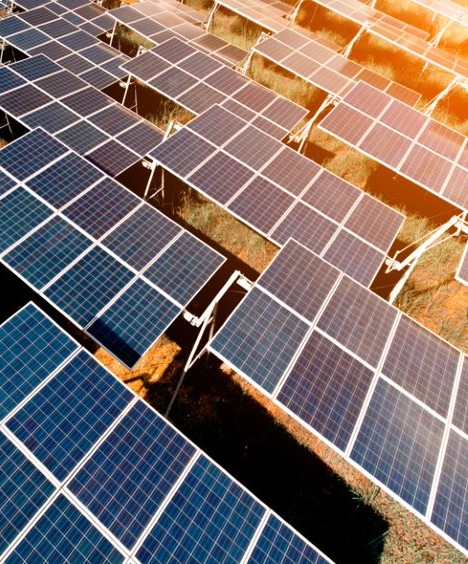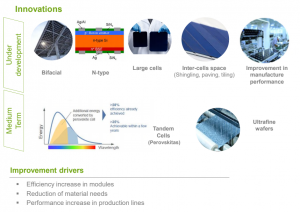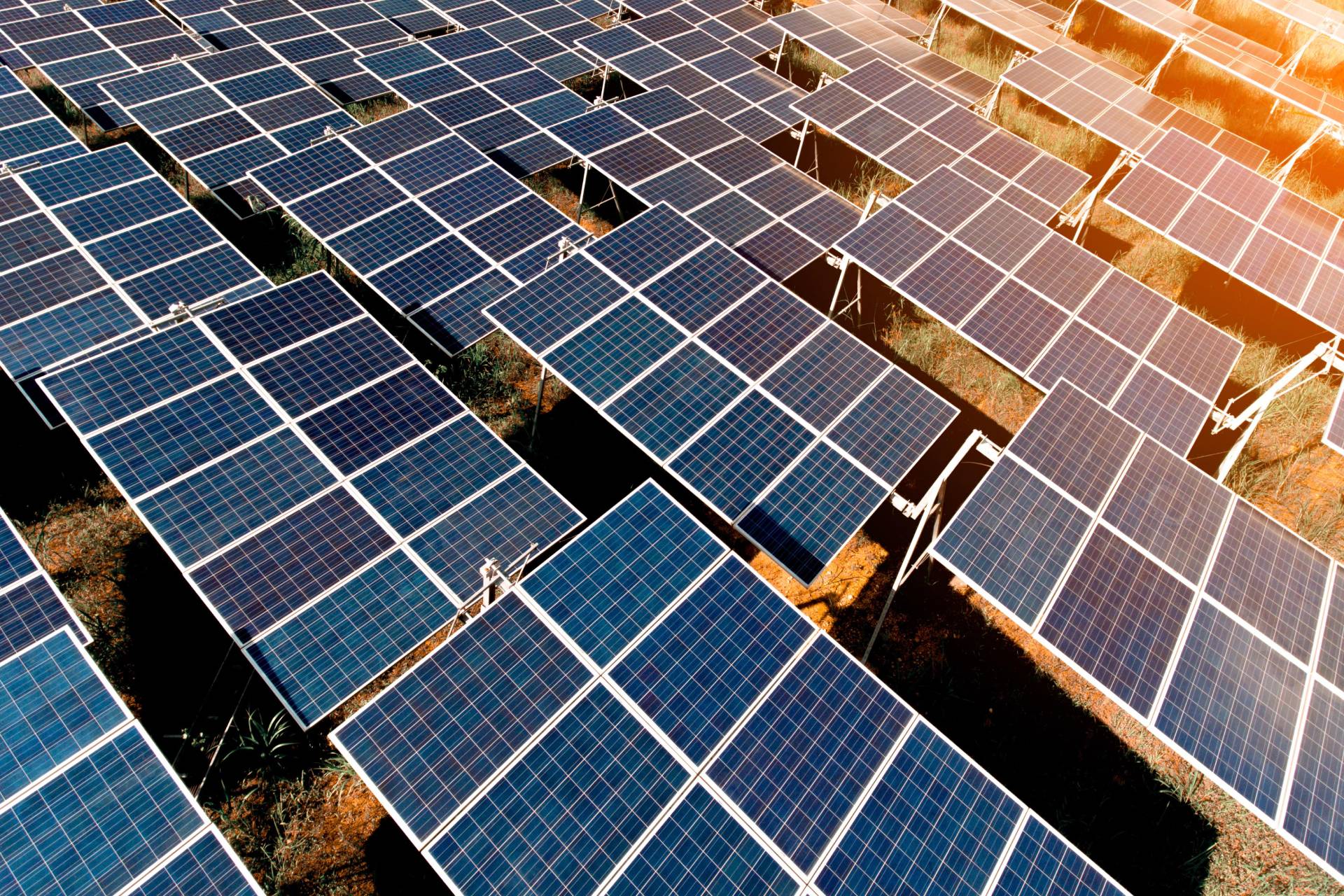
Photovaltic Energy

Photovaltic Energy (PhE)
Due to the sharp drop in prices of crystalline silicon-based solar panels, photovoltaic solar energy is one of the fastest growing renewable energy generation technologies in recent years.
The main objective of this area is to develop new photovoltaic projects and increase the competitiveness of solar energy and greater use of solar resources by implementing the following technological improvements:

Photovaltic Energy (PhE)
- Increased panel efficiency: The panels most commonly used in photovoltaic plants are polycrystalline, but it is estimated that in the medium term there will be a greater adoption of monocrystalline panels due to their lower cost and higher efficiency. In addition, investments in research and development are driving the development of technologies to make better use of the solar resource (bifacial cells), less degradation over time (N-type, double glass), less resistance to the passage of electric current (multi-Busbars, Split Cells) and, in general, greater electricity production from the same solar spectrum. Bifacial panels will have a double effect: a higher utilization of the solar resource will result in a higher number of equivalent hours and, consequently, a lower LCOE.
- Better inverters: Changing plant design to integrate string inverters instead of a central inverter will increase plant availability by reducing the shading effect, which means that the lack of solar exposure on one line limits the generation of the plant as a whole. In addition, this design reduces the corrective maintenance costs associated with this equipment.
- Floating PV system: Building floating PV systems on reservoirs or lakes offers important benefits such as helping to reduce evaporation from reservoirs, providing a way to keep cells cool, and avoiding the use of farmland, especially in densely populated countries.
New systems to maintain solar panel efficiency, such as low-cost waterless solutions to improve solar panel cleaning procedures in large-scale PV projects (multi-row robots, coatings and dirt detectors).






